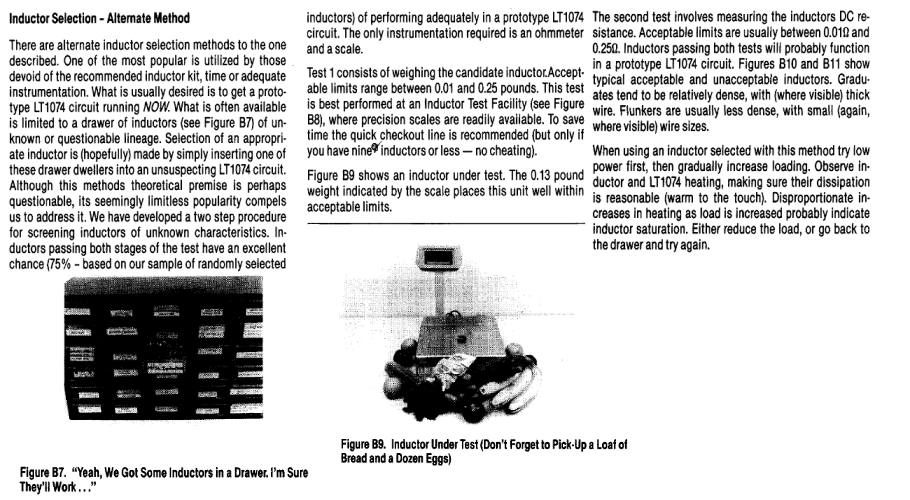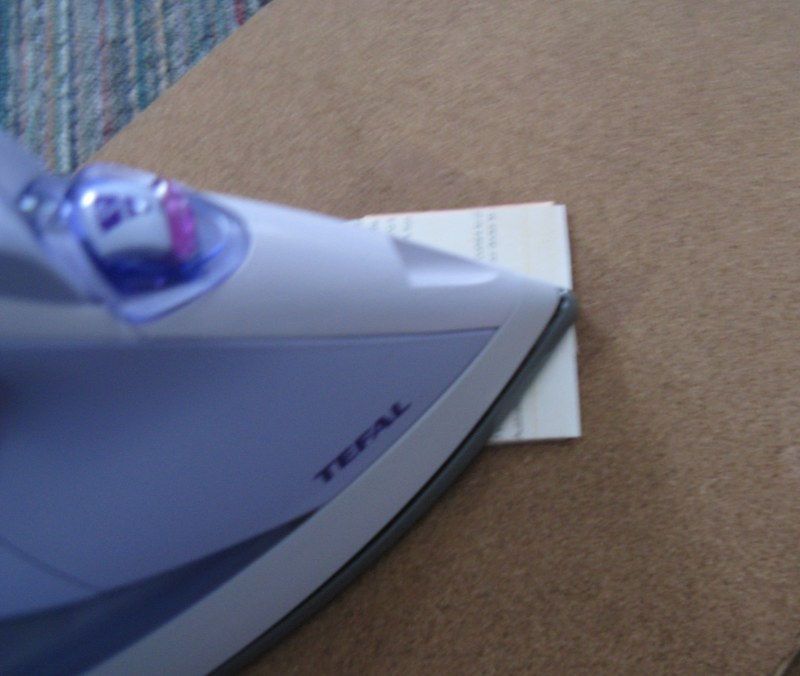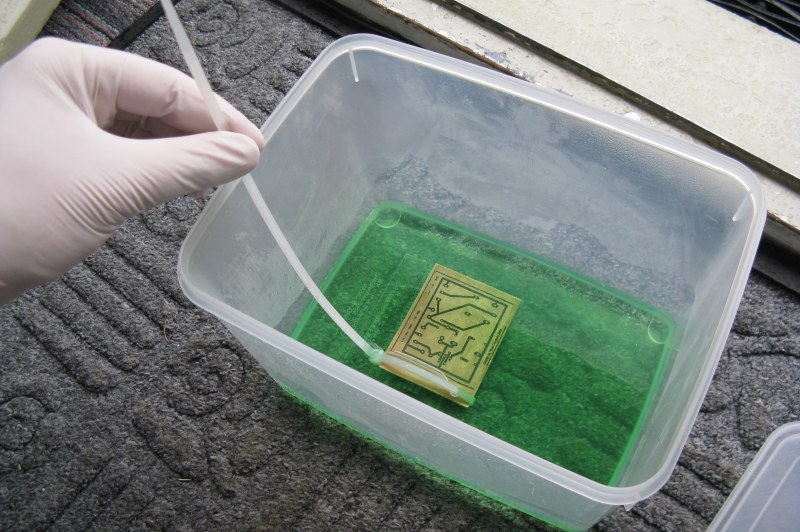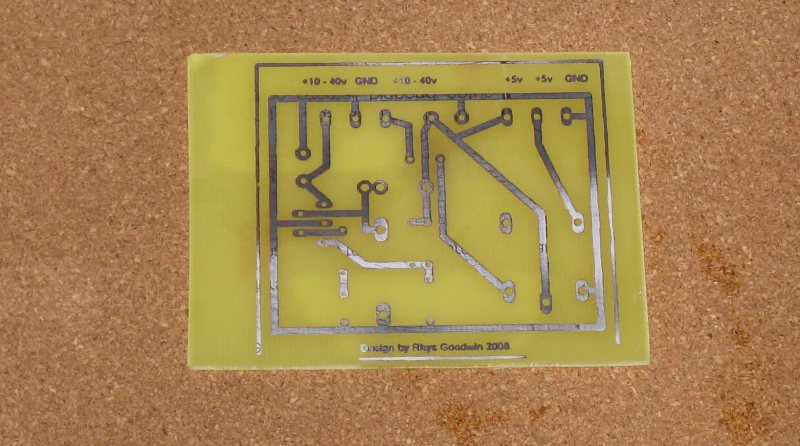DC/DC 5V Power Supply for in car PPC/GPS
Click here if your looking for the updated version of the DC/DC 5 volt power supply
I had a serial GPS mouse lying around (Thanks Alex) and my boss was kind enough to give me a retired HP Ipaq 2210 pocket PC from work. The 2 combined and I had a pretty reasonable touch screen car navigation system. Only problem was a power supply.
I didn’t want to use a cigarette lighter adaptor because I would have wires going everywhere; I wanted it hard-wired so the the GPS mouse sits on the dash with the cable disappearing down behind and a single thin cable coming out from the centre console for the Ipaq. I also wanted the GPS mouse running full time so there was no delay when it was searching for the satellites but I only wanted the IPAQ to be powered when the ignition was on.
I made 3 attempts before I was successful. First was 2 LM7805 5volt regulators. These got way too hot even with a heatsink; I would have needed a huge heatsink. Second attempt was the contents of 2 cigarette lighter to USB adaptors supposedly able to deliver 1AMP; yeah right! These things just about burst in to flames when I turned on the IPAQ! The third and successful attempt uses a LT1074 switching regulator and is detailed below.
The LT1074 was provided as a sample from Linear Technology, which is great since they cost about $NZ40 to order from RS!
The schematic is just the reference one from the LT1074 datasheet. 
I couldn’t find exact matches for all the components in the reference schematic.
Here’s a list of parts I used C1: Electrolytic 470uF (25v)
C2: Green Cap 0.01uF (This was a guess! All I really new is that it wasn’t an electrolytic because the schematic shows no polarity symbols!)
C3: Low ESR electrolytic 220uF (25v) (The application noste AN35 said to use low ESR and place it very close to the the LT1074).
MBR6745: This a SCHOTTKY-BARRIER RECTIFIER DIODE the recommended MBR745 is rated at 7.5Amps I used an ERC81-004 rated at 3Amps. Robbed from an old dot matrix printer PSU.
R1:I couldn’t find 2.8K @1% so I used 2x 5.6K @1% in parallel; both 1/2watt.
R2:2.2K @1%; 1/2 watt
R3:2.7k @5%; 1/2 watt
L1: This is of unknown value; robbed from an old dot matrix printer PSU. The application notes AN35 describe a rather humerus “alternate” method of selecting and inductor: (Click to read)
I haven’t done any PCB etching since high school so I thought I’d give it a go. I used Eagle CAD PCB design software which allows boards 100mmx80mm to be designed using their freeware version. Eagle is a bit clunky and counter-intuitive but once you get the hang of it, it’s really very good.
I followed the laser printer method for my etching as described in this instructables article.
1.Print the design to some shiny paper. (Thanks to ASB Bank!) Clean up the copper board with some 1200 sand paper
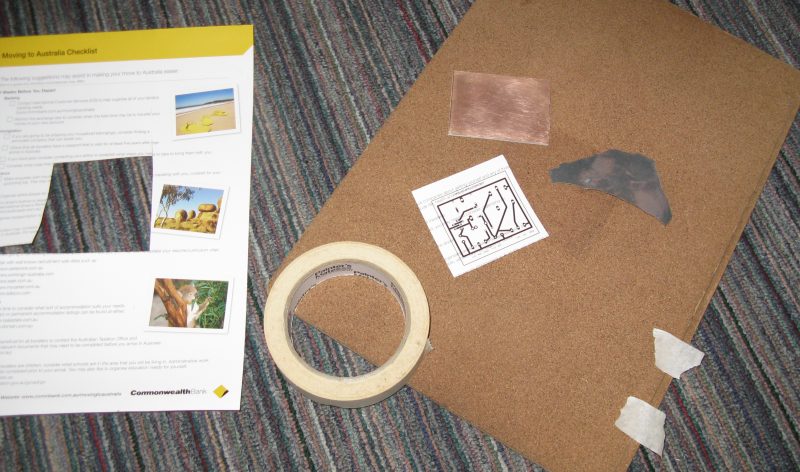
3.Soak the board for 10Mins in cold water

4.Clean the paper off the board
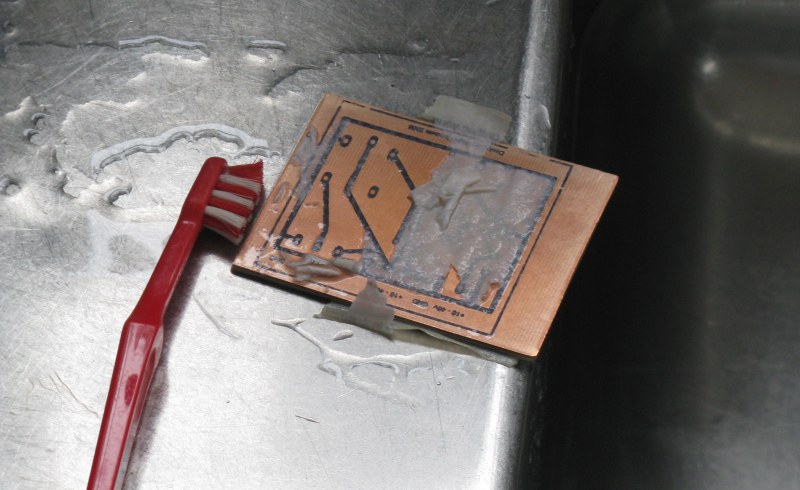
5 Make up some etchant with Hydrochloric Acid and Hydrogen peroxide (Be careful!)
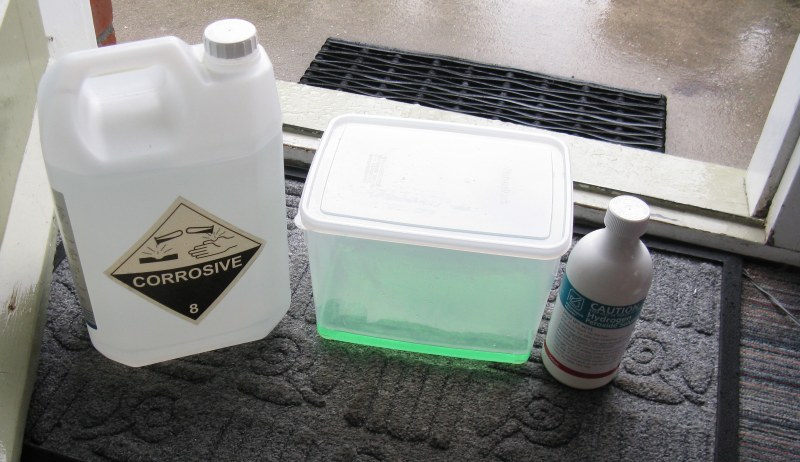
8.Drill, holes, add components and solder

9.Test. Wow! It works! It has two +5v outputs, one is always on for the GPS the other is switched on via the relay at ignition.

That’s it! A bit of shame I don’t really understand how it works! It does the job though and with very little heat.
